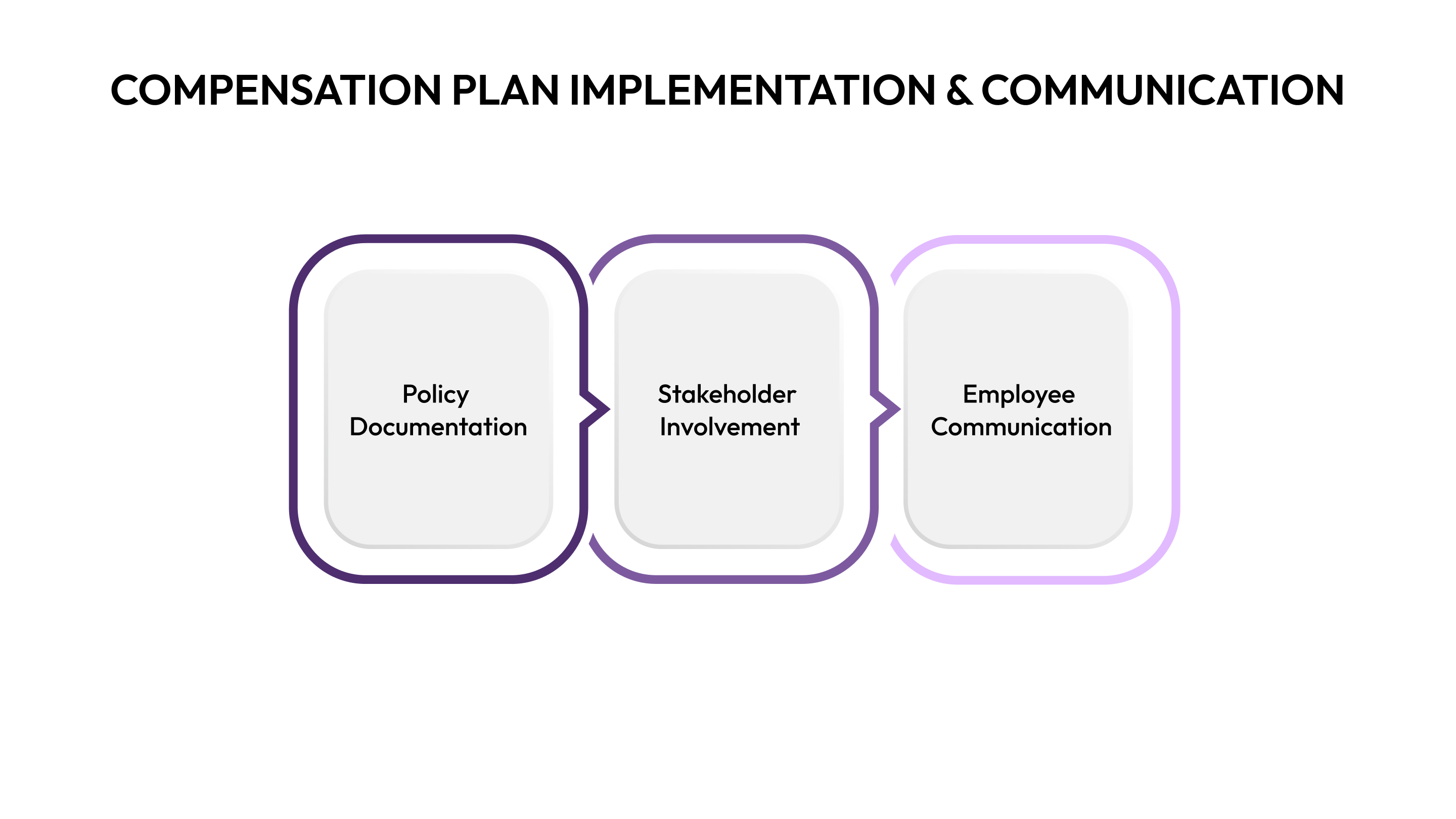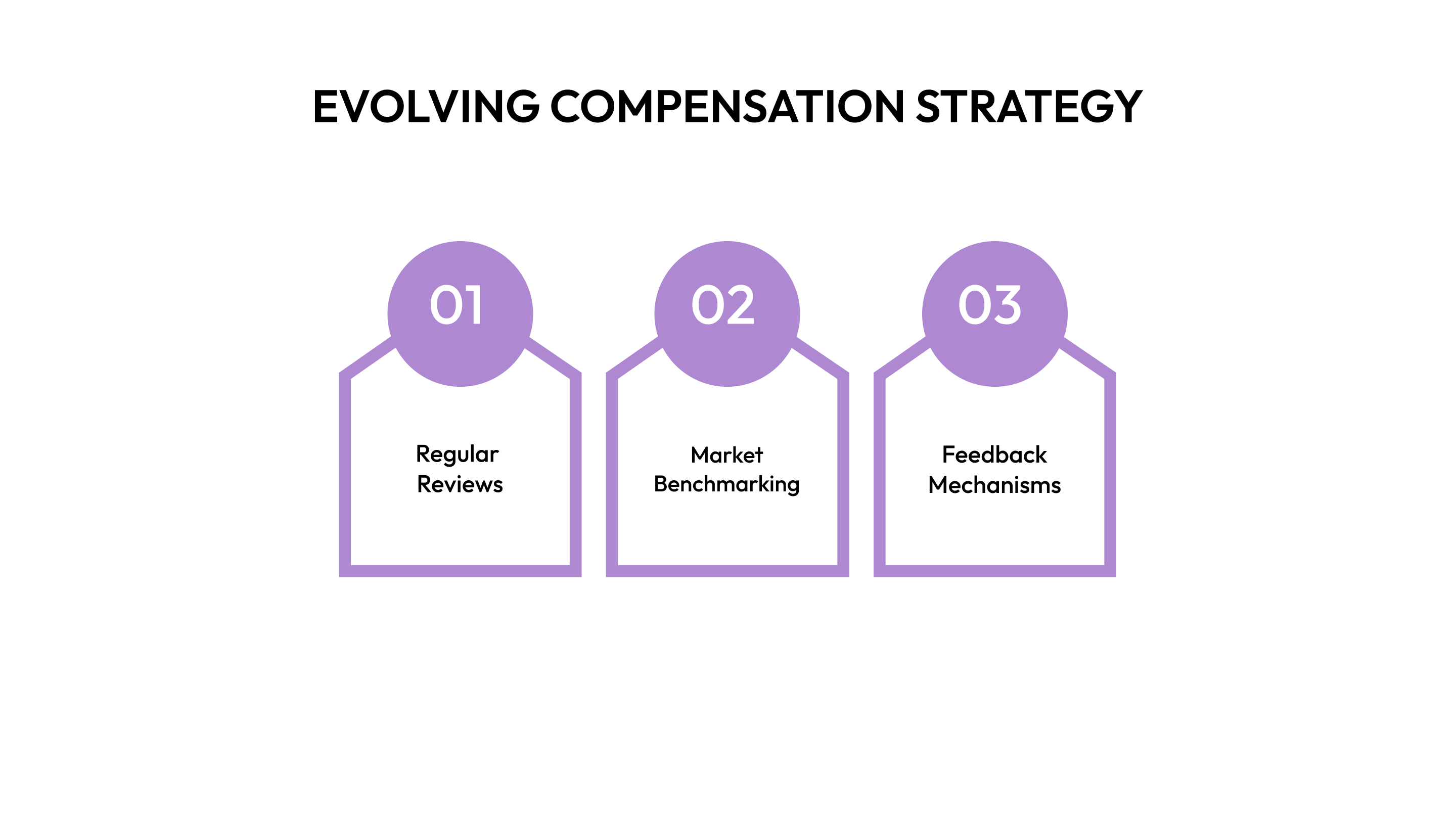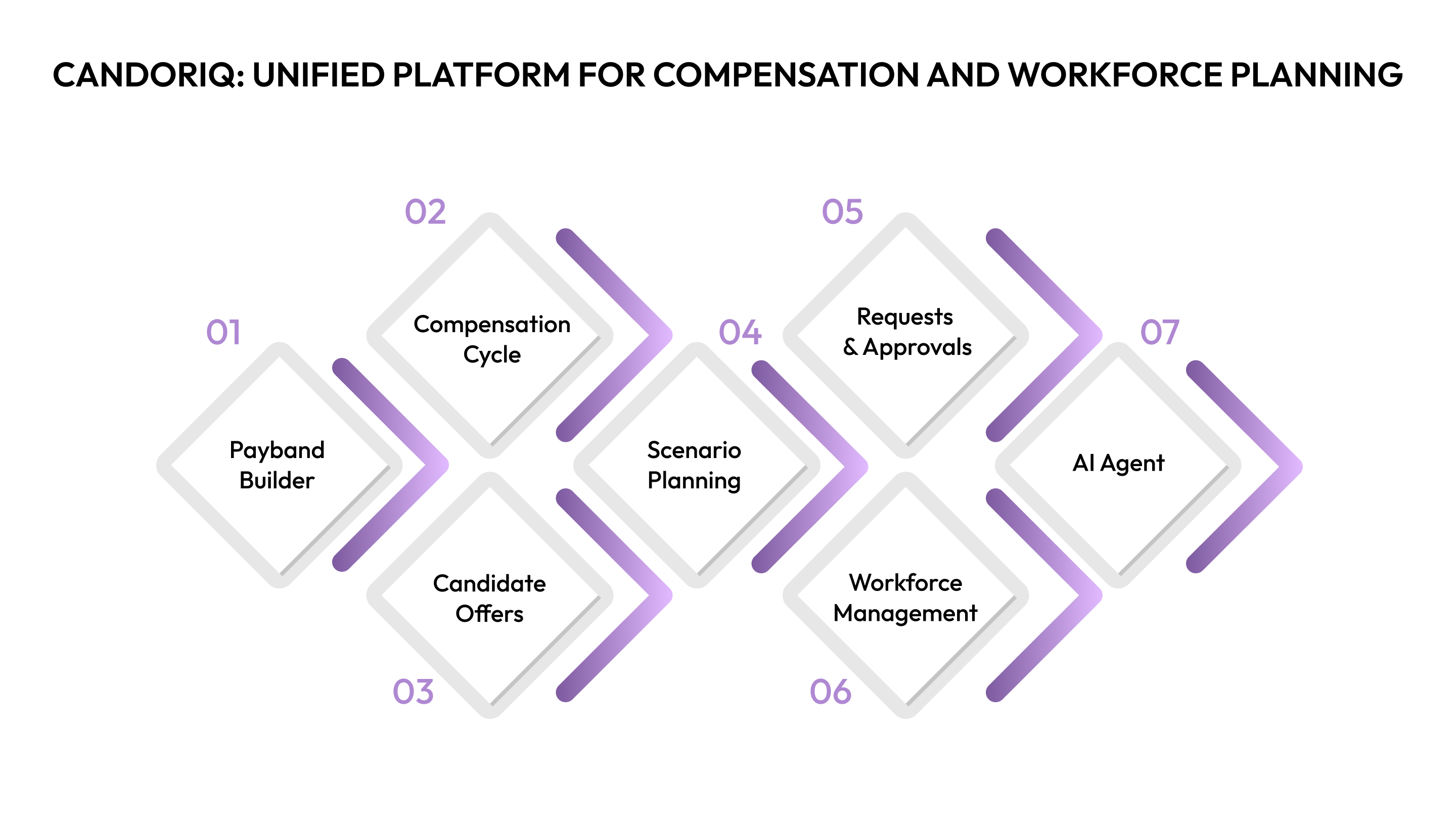Creating an Effective Employee Compensation Plan
Build a fair and scalable compensation plan for your growing team. Align pay structures with business goals and reduce turnover. Start today with our guide!

A well-designed compensation plan is crucial to keeping employees engaged and committed to your company. In fact, 46% of workers say salary or bonus is the greatest motivator for staying at their current organization. As companies scale rapidly, ensuring that pay structures are competitive and sustainable becomes more challenging.
When growth is fast and budgets are tight, balancing fairness and cost-effectiveness in compensation is challenging. Fast-growth companies scaling headcount by 2–3x annually must adjust their compensation plans accordingly. A misstep can lead to high turnover or disengagement. A well-crafted compensation plan helps foster loyalty and aligns the team with company goals.
The secret lies in building a compensation plan that works for your people and your bottom line. This guide will walk you through how you can create a compensation structure that drives growth and success.
Key Takeaways
- Building a solid compensation plan is crucial to attracting and retaining top talent while aligning with company goals.
- Adjusting compensation plans as your company scales ensures fairness and keeps budgets in check.
- A transparent compensation plan fosters trust and engagement among employees.
- Regularly review and adjust your compensation plan to stay competitive and meet employees’ needs.
- CandorIQ simplifies compensation management by offering real-time collaboration, geo-adjusted pay, and alignment between HR, finance, and leadership teams.
With these key takeaways in mind, let’s explore how to create a compensation plan that works for your scaling organization.
Foundations of an Effective Compensation Plan

Creating an effective compensation plan starts with a strong foundation. It’s essential to align your pay strategies with company values and growth goals. A well-thought-out plan ensures fairness, motivates employees, and supports your business's long-term objectives.
Building this foundation involves setting clear structures and policies that everyone in the organization understands.
Below are the key building blocks for creating a compensation plan that works:
- Compensation Philosophy: Define the principles that guide pay decisions. Consider whether your company aims for market-leading, market-average, or market-entry salaries and benefits. This helps align expectations across departments.
- Job Architecture: Develop clear job levels and classifications. Make sure roles and responsibilities are consistently defined to ensure fair and consistent compensation across the organization.
- Performance Management: Link pay to performance metrics. Rewarding employees based on performance encourages productivity and aligns their individual goals with the company’s success.
- Incentives and Rewards: Offer bonuses, equity, and other rewards to incentivize long-term commitment. These rewards help boost morale and provide employees with a direct stake in the company’s growth.
Now that you've set the groundwork, it's time to tailor your compensation plan to your organization's specific needs.
Tailoring Compensation Plans for Scaling Organizations

As companies grow rapidly, compensation planning needs to be flexible and adaptable to changing needs. Scaling organizations often face the challenge of balancing competitive compensation with budget constraints. As a result, it’s crucial to adjust your plan as the company’s size, structure, and goals evolve. The goal is to create a plan that remains sustainable even as your workforce grows.
Here are key considerations when tailoring your compensation plan:
- Budget Sensitivity: Set explicit budget constraints for compensation. Ensure that your pay plans remain sustainable and can scale without overburdening the financial resources of the company.
- Global and Remote Workforce Considerations: For globally distributed or remote-first teams, compensation needs to account for different geographic costs of living. Use localized pay rates to ensure fairness and market competitiveness.
- Equity Compensation: As your company grows, consider offering stock options or equity as part of compensation. This aligns employees with company success and gives them a long-term incentive to stay.
With the foundation in place and a tailored approach, the next step is implementing and communicating the plan to your team.

Implementing and Communicating the Compensation Plan

A compensation plan is only effective if it is adequately communicated to employees and implemented consistently. It's not just about numbers on a page; employees need to understand the rationale behind their compensation. A transparent approach builds trust and ensures that everyone in the company is on the same page. Clear communication also helps prevent misunderstandings and dissatisfaction.
Here are the key steps to implement and communicate your compensation plan:
- Policy Documentation: Create a comprehensive, easy-to-understand document outlining compensation policies. Include details on how pay levels are determined and how performance affects compensation.
- Stakeholder Involvement: Involve HR, finance, and leadership teams in the planning process. This ensures alignment between departments and avoids any gaps in understanding or execution.
- Employee Communication: Make sure employees fully understand their compensation. Explain how their pay, bonuses, and benefits align with company goals and individual performance.
Now that your plan is in motion, it's essential to monitor and adjust it to meet evolving needs regularly.
Also Read: Effective Compensation Strategies for Workforce Optimization
Monitoring and Evolving the Compensation Strategy

Compensation planning is not a one-time effort; it requires regular monitoring and adjustment. As your company grows and the market changes, so should your compensation plan. Continuously evaluating the plan helps ensure that it remains competitive, equitable, and in line with company goals. An ongoing review process also helps address potential discrepancies and allows for timely adjustments when needed.
Consider these steps for effectively monitoring and evolving your compensation strategy:
- Regular Reviews: Set up periodic audits of your compensation plan. These reviews help ensure that your pay structure is competitive and equitable across all departments.
- Market Benchmarking: Use compensation data from industry sources to ensure your pay levels align with market standards. Tools like Payscale or CompData can offer valuable insights.
- Feedback Mechanisms: Gather feedback from employees about their satisfaction with the compensation plan. This feedback can inform future adjustments to meet their needs better.
By regularly monitoring your compensation strategy, you ensure that your plan stays relevant and aligned with both company growth and employee expectations. Now that you're equipped with the tools to build and monitor your compensation plan, it's time to explore a solution that simplifies the process.
CandorIQ: A Unified Platform for Compensation and Workforce Planning

As compensation planning becomes increasingly complex, using the right tools can make all the difference. CandorIQ offers a unified platform that integrates compensation management, headcount planning, and retention efforts. This platform provides HR and finance teams with the necessary tools to manage pay bands, compensation cycles, and headcount forecasts all in one place.
With real-time collaboration capabilities and support for geo-adjusted compensation, CandorIQ ensures transparency, equity, and alignment across the organization.
Here are the main features and benefits that CandorIQ provides:
- Compensation & Payband Builder: Define pay bands by job level, location, and department. Use benchmark datasets for location-based salary adjustments, improving pay equity and transparency.
- Compensation Cycle: Automate merit and bonus reviews with approval workflows. Track budgets and raises in real time, reducing manual coordination errors.
- Candidate Offers: Provide clear compensation breakdowns to candidates, showing salary, equity, bonus, and benefits. This improves transparency and retention.
- Headcount Scenario Planning: Model future organizational structures and evaluate their financial impact. This ensures alignment between hiring goals and budget constraints.
- Headcount Requests & Approvals: Simplify new hire requests by embedding job details, rationale, and budgets. Sync approvals directly with ATS and finance systems for smoother workflows.
- Workforce Management: Track open roles, promotions, attrition, and budget usage in one view. Align your workforce plans with your actual headcount and compensation expenses.
- AI Agent: Get compensation recommendations based on historical benchmarks and peer data. This AI-driven feature supports data-driven decision-making and forecasting.
CandorIQ provides transparency, structure, and equity to help companies ensure fair pay, align workforce plans with budgets, and reduce miscommunication risks between HR, finance, and leadership.
Our platform eliminates spreadsheets and disconnected processes, helping HR teams become strategic partners. It’s ideal for mid-sized to growth-stage organizations with lean HR and finance teams, particularly in industries like SaaS, fintech, e-commerce, and professional services, where teams are scaling rapidly.

Conclusion
An effective compensation plan is more than just a pay structure. It’s a tool for attracting, retaining, and motivating your team. As your company scales, a well-designed plan ensures you remain competitive, fair, and aligned with company goals. By regularly reviewing and adjusting your plan, you can continue to meet both your employees’ needs and your business objectives.
Teams with 1–10 people typically own compensation operations in mid-sized organizations, often led by People Ops/HRBPs or Recruiting Managers. Budget-sensitive CFOs require workforce cost predictability to manage financial resources effectively. In USA-based companies with team sizes ranging from 50 to 5,000 employees, a well-executed compensation plan is key to reducing turnover and driving growth.
If you're ready to enhance your compensation planning, CandorIQ offers the tools to help you succeed. Book a demo today to see how our platform can support your team’s needs and drive your business forward.
FAQs
Q: How can I ensure my compensation plan stays competitive?
A: To maintain a competitive compensation plan, regularly compare your pay structure against industry benchmarks and adjust as needed. This ensures your offers remain appealing to top talent.
Q: How do I balance budget constraints with offering competitive pay?
A: Begin by setting clear salary budgets based on your company’s financial health. Focus on providing performance-driven incentives and additional benefits to complement salary offerings.
Q: What is the best way to communicate compensation changes to employees?
A: Ensure transparency by clearly explaining why compensation changes are being made. This can help employees understand the connection between the company's goals and their individual pay.
Q: How do I address pay equity across different regions?
A: Implement geo-adjusted compensation to fairly account for regional differences. This approach maintains pay equity while adjusting for variations in the cost of living and market demands.
Q: Why is compensation transparency important?
A: Transparency builds trust with your employees. When employees understand how their pay is determined, it increases engagement, satisfaction, and overall loyalty to the organization.


